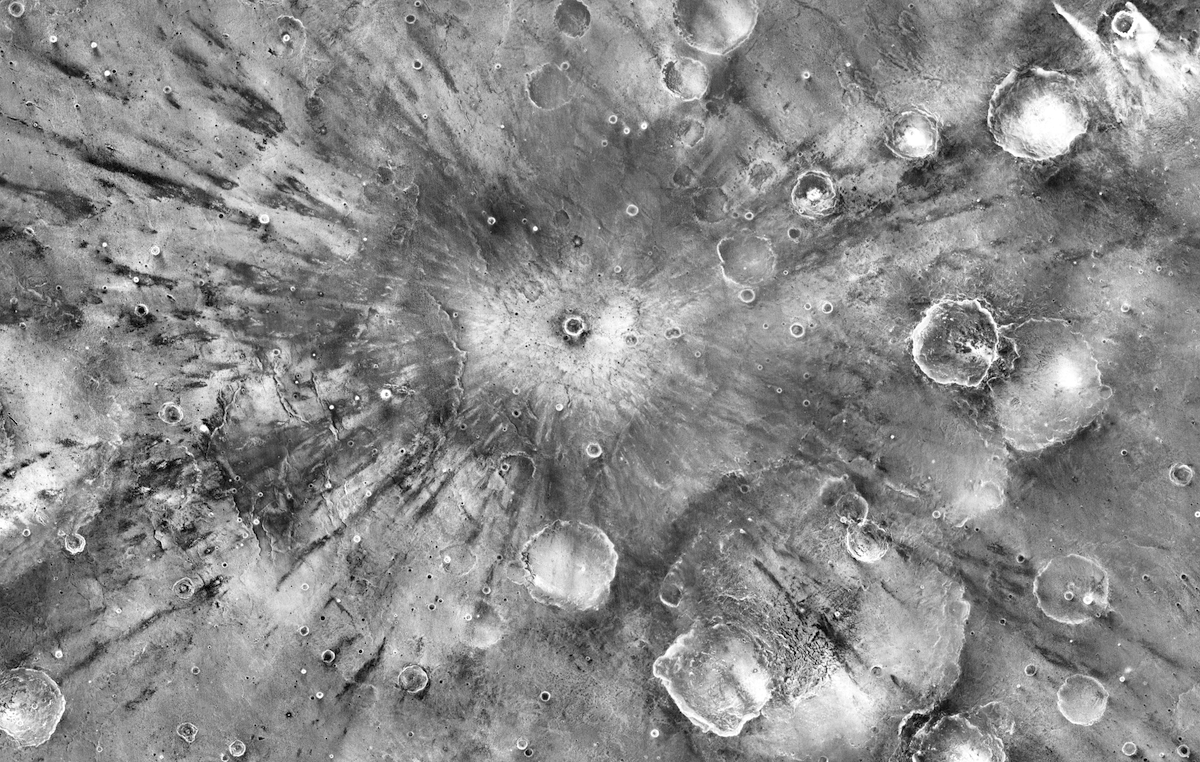For years, NASA’s Mars Odyssey has been working on some night moves. It’s been taking pictures of the Red Planet during nighttime — more than 20,000 in all — to see how the planet’s heat signature looks while the sun is down.
The result is the highest-resolution map ever of the thermal properties of Mars, which you can see here. Why is this important? Researchers say it helps tell the story about things such as if an area is shrouded with dust, where bare bedrock is, and whether sediments in a crater are packed tight or floating freely.
“Darker areas in the map are cooler at night, have a lower thermal inertia and likely contain fine particles, such as dust, silt or fine sand,” stated Robin Fergason at the USGS Astrogeology Science Center in Arizona, who led the map’s creation. Brighter areas are warmer, likely yielding regions of bedrock, crust or coarse sand.
The map from Odyssey’s Thermal Emission Imaging System (THEMIS) is also used for a more practical purpose: deciding where to set down NASA’s next Mars mission.
After assisting in landing site selection for the Curiosity mission, the THEMIS data will be used to figure out where the Mars 2020 rover will be placed, Arizona State University stated.
You can check out more recent THEMIS images (updated daily) on this website.
Source: Arizona State University


Recall it was first designed to detect any geothermal features. Have anything been found?
(possibly it is more intricate, if there are no obvious heatspots, than they could compare thermal maps at different local solar time and look for the deviations from the tempeature vs time profiles, like some feature or area cools fast or as usual in the evening but remains warmer than expected in the morning…)